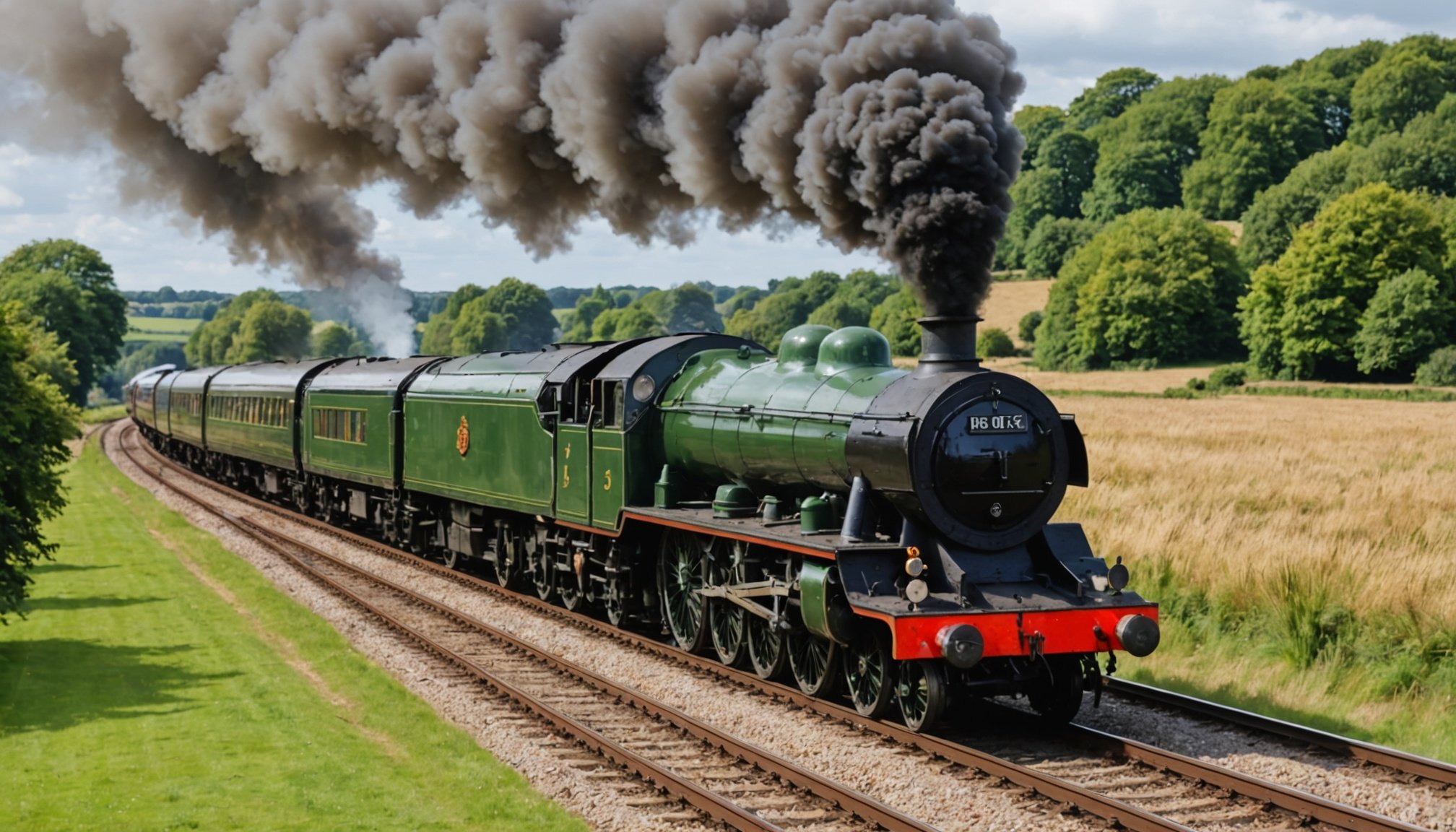Overview of Britain’s Railway Heritage
Britain’s railway heritage is a testament to its pioneering role in the development of rail transport. Emerging in the early 19th century, the railway revolutionised travel and commerce, laying tracks for broader industrial growth. It began with the Stockton and Darlington Railway in 1825, marking the advent of public railways, which transformed Britain into a hub of innovation and connectivity.
The historical significance of Britain’s railways cannot be overstated. They facilitated the rapid movement of goods and people, contributing substantially to the urban and economic landscape of modern Britain. Moreover, the railways spurred technological advances and societal changes, helping to shape social interactions and economic opportunities by connecting rural and urban areas.
Also read : Ultimate Tips for a Memorable Journey Through Belfast’s Historic Shipyards
Equally noteworthy are the cultural landmarks that have emerged from this rich railway history. Sites like the Forth Bridge and the London Underground highlight key influences on the railway heritage, celebrating architectural prowess and engineering feats that continue to capture public imagination. These landmarks embody both a reverence for Britain’s industrious past and a commitment to preserving this legacy for future generations to engage with and learn from.
Must-Visit Railway Heritage Destinations
Exploring Britain’s railway destinations offers a deep dive into history and culture, making for an enriching travel itinerary with numerous must-visit sites.
Additional reading : Explore london”s premier locations for an unforgettable authentic english tea ceremony!
The National Railway Museum, York
Located at the heart of York, The National Railway Museum stands as an epitome of historical significance. Its vast collection, spanning over 100 locomotives, highlights railway evolution from the grandeur of the Victorian era to modern innovations. Here, visitors can marvel at key exhibits such as the iconic Mallard, the world’s fastest steam locomotive, and the opulent royal carriages. Engaging displays offer glimpses into railway history, catering to enthusiasts and newcomers alike. It’s advisable to check for guided tours, as they provide insightful narratives that enhance the museum experience.
The Severn Valley Railway
For an authentic heritage railway experience, the Severn Valley Railway offers a picturesque journey through England’s countryside. With vintage steam and diesel trains, visitors can enjoy themed events such as the Autumn Steam Gala. This attraction ensures accessible travel options, maintaining an old-world charm while accommodating modern needs.
The Ironbridge Gorge
Recognised as a prominent cultural landmark, the Ironbridge Gorge intertwines with the Industrial Revolution’s history. As a UNESCO World Heritage Site, it offers educational opportunities through vivid exhibits and interactive sessions, making it a cultural heritage must-see.
Additional Noteworthy Railway Heritage Sites
Amid Britain’s rich tapestry of railway history sites, several lesser-known yet fascinating locations offer opportunities for cultural exploration beyond the more famous attractions.
The Bluebell Railway
The Bluebell Railway is renowned for its vibrant restoration efforts and community involvement. Dedicated volunteers work tirelessly to preserve its historic steam trains, creating a living museum that rolls through stunning Sussex countryside. Visitors can enjoy scenic experiences and seasonal events. Each season brings unique journeys through landscapes brimming with natural beauty, especially captivating during spring as wildflowers bloom.
Ravenscar, the ‘town that never was’
A fascinating stop, Ravenscar tells the tale of ambitious plans for a resort that was never fully realised, influenced by the railway’s early presence. Known as the ‘town that never was,’ its historical walking trails provide insight into this intriguing past. These explorations showcase the railway’s importance in preserving history, allowing visitors to tread paths once bustling with ambition.
The Glenfinnan Viaduct
The Glenfinnan Viaduct, famous for its iconic landscapes featured in movies, stands as a marvel of historical engineering. Spanning the depths of Scottish scenery, it offers breathtaking views that attract photographers and enthusiasts alike. Visitors are encouraged to employ creative photography tips to capture its grandeur, ensuring a memorable engagement with this engineering masterpiece.
Tips for Exploring Railway Heritage in Britain
Embarking on a journey through Britain’s rich railway heritage offers countless opportunities for historical exploration. To maximise your experience, consider the ideal times to visit. Many sites bloom in spring and summer, providing picturesque settings complemented by variable seasonal events.
When planning your itinerary, it is beneficial to engage in a mix of guided tours and self-exploration. Guided tours often provide unique insights and stories that enrich your understanding of these historical sites. However, self-exploration allows for more leisurely appreciation and personal discovery.
For an organised journey, embrace available resources. Local visitor centres often have comprehensive travel tips and maps. Online platforms and railway preservation societies also offer valuable insights into historical exploration routes and hidden details that may not be immediately apparent.
Lastly, when curating your itinerary, factor in some flexibility. Many railway attractions feature special events or temporary exhibits; adapting your schedule can lead to unexpected delights. Be sure to check event calendars and travel advisories to ensure an enriching and hassle-free experience across the diverse tapestry of Britain’s railway legacy.




